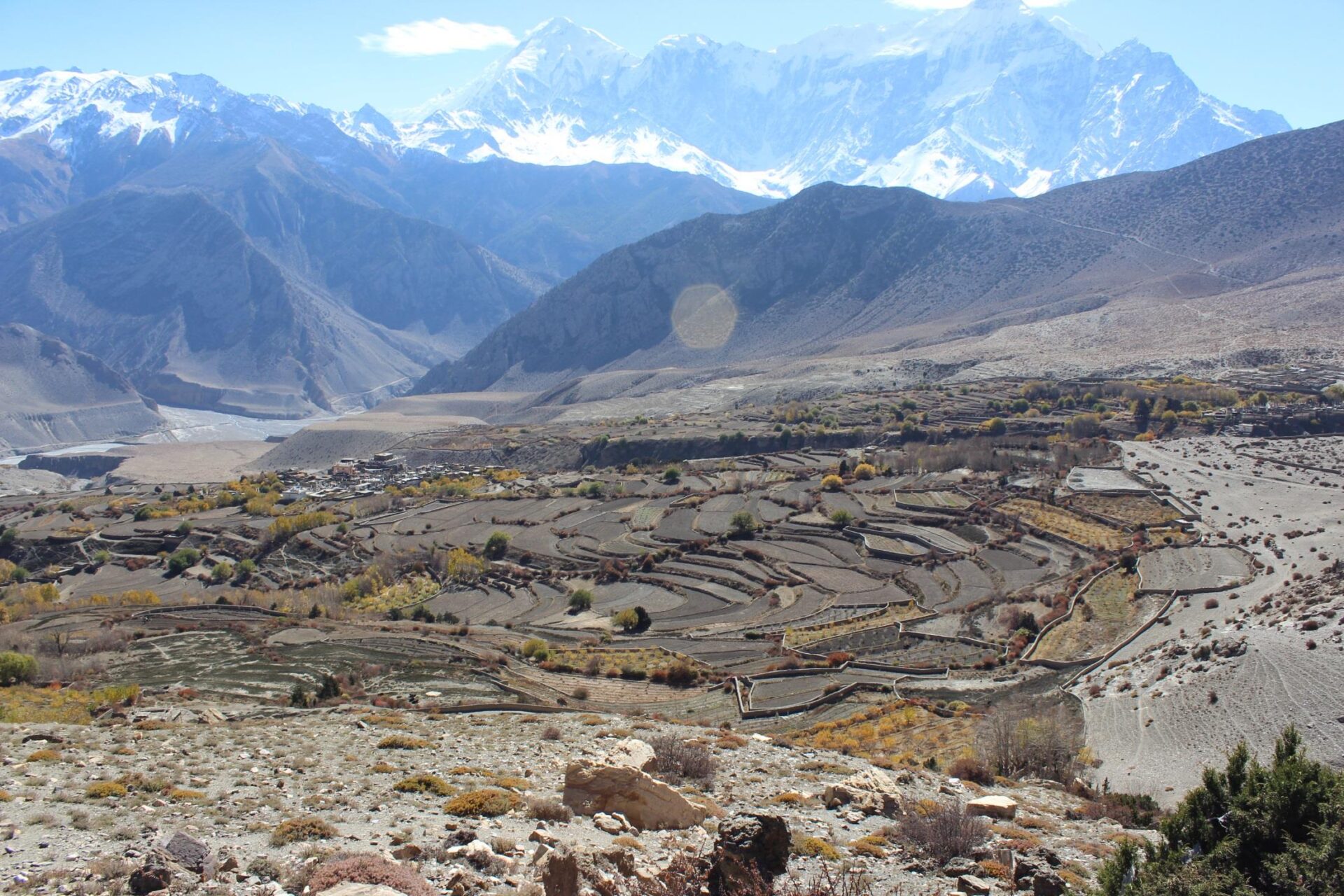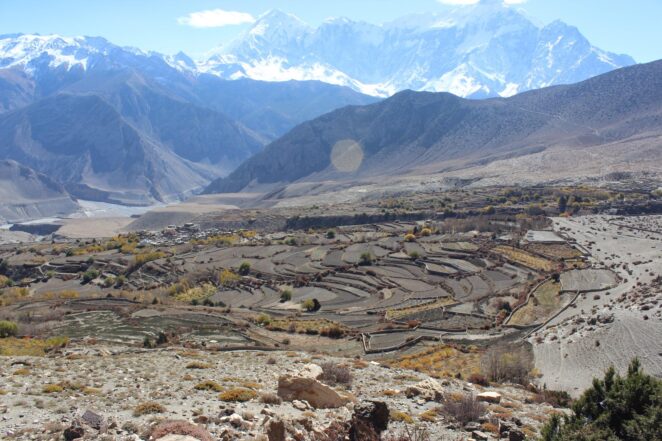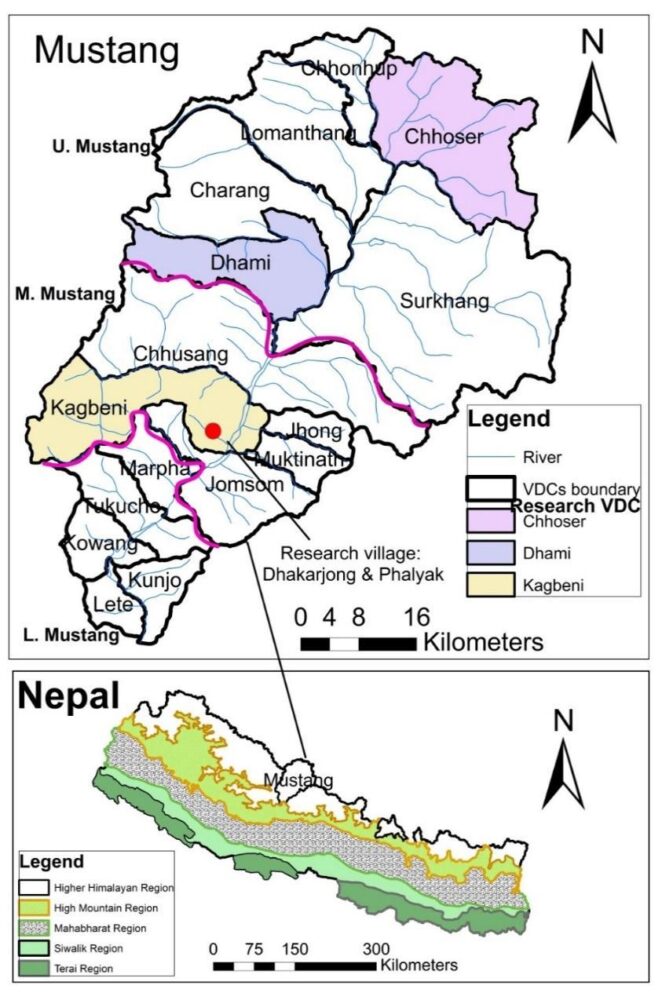Mountain EVO Case Study: Upper Kaligandaki basin, Mustang, Nepal


Mustang district (Photo by Dr Bhopal Pandey, Imperial College London)
The Upper Kaligandaki basin is located in the Mustang district of the Trans-Himalayan region of Nepal, bordering the Tibet Autonomous Region of China to the northeast. The Mustang district has a population of around 15600 inhabitants, and a literacy rate of 57%. Although Mustang is not rated among the poorest districts in Nepal, it was chosen as one of the case studies of the Mountain-EVO project because of its relative accessibility, which is important for fieldwork, and the strategic links with local development actors.
The basin lies in the rain shadow of the Annapurna massif and receives less than 200 mm of precipitation annually. The climate of the district is generally dry with strong winds and intense sunlight. Winter temperatures regularly fall below -20ºC. The land resource of Mustang consists of abundant grassland and shrub species in slopes and valley bottoms. Apples are one of the major cash crops grown in the area.

Map of Nepal showing Mustang district
The basin is valued for vulnerable highland ecosystems and the services they provide (see also blog by Bhopal Pandeya, who is an ESPA fellow working with our Mountain EVO partners). Locally, water supply, agricultural production and the attractive landscape are seen as the dominant ecosystem services (ESS). Water is a scarce productive and symbolic resource, and is highly contested between individuals, communities, and social groups within the basin.
Disputes over water are related to domestic water use, water sharing, and the control of water sources. This ESS is strongly related to agricultural production, which is both a main consumer of water for irrigation, but also a potential threat to water quality because of soil erosion.
Lastly, the integrity of the landscape is a major ecosystem service that benefits local people because of tourism. Melting glaciers and soil degradation are major threats to ecosystem services. Several recent international projects have quantified glacier melt, but the impacts on local livelihoods remain unclear. Similarly, soil degradation may increase risks of floods, landslides, river cutting, reservoir capacity reduction, and water quality degradation.
(0) Comments
There is no content